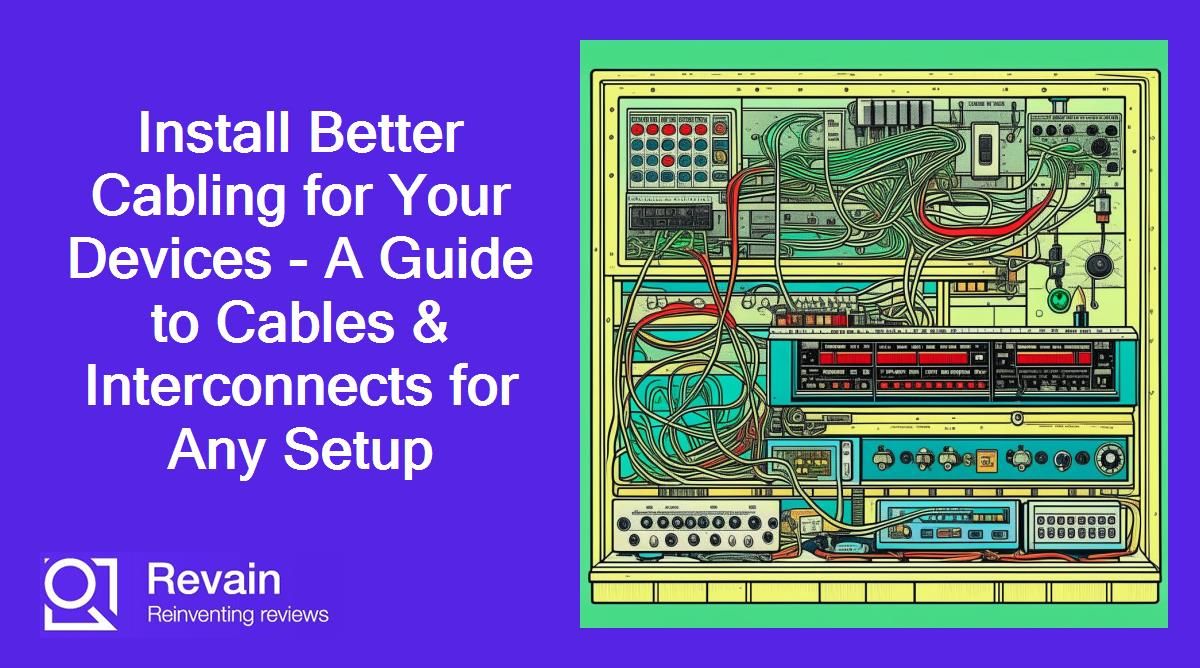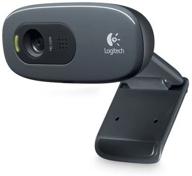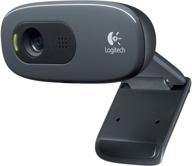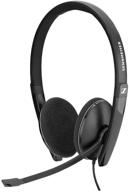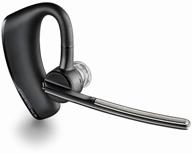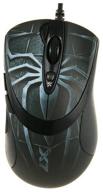The Must-Have Cables for Your Setup
Having the right cables is essential for setting up your electronics and devices. The correct cables allow you to power, charge, and connect your gadgets seamlessly. Here are the must-have cables for any home media setup.
HDMI Cables
HDMI cables are the standard for high definition video and audio transmission. They provide a digital connection between your devices like Blu-ray players, gaming consoles, and TVs up to 4K resolution. Some key things to consider are:
- Bandwidth - Higher bandwidth cables like HDMI 2.1 allow higher resolutions and refresh rates.
- Length - Longer cables can cause signal degradation, so don't buy more cable than you need.
- Quality - Well-made cables are less prone to issues like disconnected devices or flickering screens.
Another interesting products
USB Cables
USB cables connect all types of peripherals and devices to your computer like printers, external storage, controllers, and more. The main types are:
| Type | Speed | Use |
|---|---|---|
| USB 2.0 | 480 Mbps | Mice, keyboards, printers |
| USB 3.0/3.1 | 5-10 Gbps | External storage, high bandwidth devices |
| USB-C | 10 Gbps | Newer mobile devices and accessories |
Ethernet Cables
For wired internet connectivity, you'll need Cat 5e or Cat 6 Ethernet cables. These cables provide faster and more reliable connectivity for gaming PCs, smart TVs, and streaming boxes compared to WiFi. Key considerations are:
- Shielded vs unshielded - Shielded twists better reject electromagnetic interference.
- Solid vs stranded - Stranded offers more flexibility while solid works better for permanent runs.
- Length - Up to 100 meters is standard but longer runs may require repeaters.
Audio Cables
To wire stereo speakers and other audio components, you'll need speaker wire and RCA cables:
- Speaker wire - Used for connecting speakers to receivers and amplifiers. The gauge affects how much power they can handle.
- RCA cables - Carry stereo audio signals between devices using the red and white connectors.
- Optical audio - Transmit multichannel surround sound digitally between devices.
Top products in 🔌 Cables & Interconnects
Power Cables
Don't forget the cables that provide electricity to your devices:
- AC power cords - Deliver electricity from outlets to devices like TVs and game consoles.
- Surge protectors - Protect electronics from voltage spikes while allowing multiple devices to be plugged in.
- Extension cords - Extend the reach of outlets to power devices remotely.
Investing in the right cables prevents connectivity issues and futureproofs your system as you add new tech. With this cabling essentials checklist, you'll be set up for success.
Similar products
Keep Your Devices Charged and Connected
In our technology-driven world, we rely on cables and chargers to keep our devices powered up and connected. Having the right connections allows seamless communication between your gadgets and accessories.
Charging Cables
Charging cables deliver electricity to recharge device batteries. Some common types are:
- USB - The standard cable for charging mobile devices and accessories. USB-C is the latest version, supporting fast charging.
- Lightning - Used for charging Apple devices like iPhones and iPads.
- Micro USB - An older but still widely used connector for charging Android phones.
Look for durable charging cables with features like reinforced connections and ample length. Having spares helps ensure you can stay powered up on the go.
Extender Cables
Extender cables lengthen the reach of cables that connect devices. They allow you to:
- Use USB devices farther from your computer.
- Connect HDMI devices like Bluray players at a distance from your TV.
- Have flexibility in furniture placement for your home theater setup.
Opt for active rather than passive extenders for best performance over longer distances.
Adapter Cables
Adapter cables convert between different connectors to link incompatible devices. For example:
- USB-C to USB-A adapters allow connecting older USB accessories to newer laptops.
- DisplayPort to HDMI adapters let you connect HDMI monitors to DisplayPort computers.
- Thunderbolt 3 to Thunderbolt 2 adapters join old and new Thunderbolt devices.
Keep a variety of adapters on hand for flexibility when connecting gadgets with different port types.
Sync Cables
Sync cables transfer data between devices like phones, tablets, cameras, and computers. Examples include:
- USB sync cables - Transfer photos, videos, music between PCs and devices.
- Camera to phone sync cables - Offload pictures from your DSLR to mobile devices.
- 3.5mm sync cables - Used with older devices to sync and transfer media.
Syncing cables help back up and manage your digital content across gadgets.
Splitter Cables
Splitter cables take a single connection and split it into multiple ones to connect several devices. Types include:
- HDMI splitters - Send video and audio from one source to multiple displays.
- USB splitters - Allow several USB devices to be connected to one port.
- Ethernet cable splitters - Divide one Ethernet connection into many.
The right cables allow you to power up, link together, and access data across your growing arsenal of personal electronics.
Cables to Complete Your Home Entertainment System
Setting up a home theater or entertainment system involves more than just the core components like TVs, speakers, and media players. The right cables are critical to fully connect your devices for seamless audio/video distribution and control.
TV Cables
TVs require several cable types:
- HDMI - Carry high definition video and audio signals from devices like Blu-ray players, gaming consoles, and streaming sticks.
- Component video - Separate video into red, blue, and green signals for high quality picture.
- Ethernet - For smart TVs to connect to the internet via wired connection.
- Optical audio - Transmit multichannel surround sound between TVs and home theater receivers.
Speaker Wires
Speaker wires conduct amplified audio signals from receivers to passive speakers. Key aspects are:
- Gauge - Lower gauge numbers indicate thicker wires that can transmit more power over longer distances.
- Bare wire vs banana plugs - Banana plugs make connecting and disconnecting easier but cost more.
- Polarity - Proper polarity (+ to +, - to -) is needed between speaker wires and terminals for correct audio signals.
Subwoofer Cables
Subwoofer cables carry the low frequency bass audio signals to subwoofers:
- RCA - The most common subwoofer cable connection uses red and white RCA connectors.
- Speaker wire - Higher end subwoofers may use binding post connectors for speaker wire.
- Coaxial - Some systems use coaxial digital audio cables for .1 LFE subwoofer channels.
HDMI Switches
HDMI switches allow you to connect multiple devices like game consoles or streaming boxes to one display. Features include:
- 4K/1080p support - Ensure your switch can handle your highest video resolution needs.
- HDMI outputs - More outputs allow connecting to extra TVs or projectors.
- Remote or app control - Easily change connected devices without manual switching.
Cable Management
Finally, cable management products hide and organize all those cables:
- Cable ties - Group wires together into tighter bundles.
- Sleeves - Cover cables for a streamlined look.
- Raceways - House cables along walls, floors, and ceilings.
Properly cabling your home theater allows seamless integration and control. Follow this guide when connecting and completing your entertainment system setup.
Subwoofer Cables
Subwoofers produce the low frequency bass in a home theater or stereo sound system. Connecting them properly using the right cables is important for system performance.
Subwoofer Connections
There are two main ways to connect subwoofers:
- Line Level - Uses RCA or coaxial cables to connect pre-amplified signals from a subwoofer output on a receiver.
- Speaker Level - Utilizes speaker wires to connect amplified signals from the speaker terminals on a receiver.
Line level is the most common and allows independent subwoofer volume control. Speaker level runs through the main amplifiers but doesn't require separate sub outputs.
RCA Subwoofer Cables
RCA cables are the standard line level connection:
- Red and white connectors - Carry the low frequency mono audio signal.
- 1-2 meters length - Longer runs can degrade the signal quality over the thin cables.
- 75-ohm coaxial design - Minimizes interference for clean audio transmission.
Well-constructed, shielded RCA cables prevent hum, noise and crosstalk when transmitting the subwoofer audio.
Coaxial Digital Audio
For discrete LFE channel connections in surround sound, coaxial digital audio cables can be used:
- Orange RCA connector - Carries the LFE (.1) channel specifically for subwoofer frequencies.
- Digital signal - Allows lossless transmission without deterioration unlike analog.
- Bandwidth over 100kHz - Accurately transfers ultra low subwoofer frequencies.
The thick shielding and tight construction prevent cable capacitance issues affecting the low frequency digital signal.
Speaker Wire
For speaker level connections, typical speaker wire is utilized:
- Dual conductors - Allows connections to +/- amplifier terminals.
- 12-16 gauge - Handles the high wattages subwoofers often require.
- Oxygen-free copper - Maximizes conductivity for distortion-free bass.
High quality speaker wire avoids resistance and power losses when transmitting amplified signals from receivers to subwoofers.
Choosing the right cabling ensures your subwoofer delivers room-shaking low end for a truly immersive home theater experience.
Cable Management
A tangled mess of cables snaking behind your entertainment center or computer desk not only looks unsightly, but can cause signal degradation and accidents. That's why implementing proper cable management is essential.
Benefits
Well-organized cables provide many advantages:
- Safety - Eliminates tripping hazards from loose cables strewn about the floor.
- Reduced interference - Bundling cables avoids crosstalk and signal leakage issues.
- Easier changes - You won't have to rip out and redo all cabling when adding or removing devices.
- Improved airflow - Prevent cables from blocking ventilation around electronics.
- Visual appeal - Clean, hidden cables simply look nicer.
Strategies
Effective cable management involves several key strategies:
- Plan connections - Minimize cable lengths and identify paths before installation.
- Use ties - Group related cables together with velcro ties or zip ties.
- Label cables - Use tags to identify cables so tracing connections is easy.
- Hide cables - Use conduits, raceways and sleeves to conceal wiring.
- Manage slack - Neatly coil excess cable lengths instead of just stuffing them.
Products
There are many cable management products available:
- Cable raceways - Housing that attaches to surfaces and hides cables.
- Sleeves - Wraps that bundle cables together in a clean package.
- Cable clips - Affix cables tightly against surfaces out of sight.
- Cable ties - Available in velcro and nylon for flexible fastening.
- Cable conduits - Tubing that neatly routes cables through walls and ceilings.
Execution
When installing cables:
- Use the right length - Avoid excess cable while leaving room for adjustments.
- Maintain bend radius - Don't bend cables tighter than allowed or signal loss can occur.
- Be neat - Take time to neatly organize and fasten cables for optimal appearance.
- Allow ventilation - Don't completely enclose electronics or overheat issues could occur.
Following basic cable management principles makes creating an organized, professional, and safe wiring setup easy.
How to get an Amazon Prime subscription for a profit in "Cables & Interconnects"?
Amazon Prime provides fast, free shipping on millions of products as well as access to streaming media. For cable and interconnect purchases, a Prime membership can save you money on shipping costs. Here are some tips to effectively utilize a Prime subscription for profit when buying cables and interconnects equipment.
Take advantage of free shipping
The major benefit of an Amazon Prime membership is free two-day shipping on eligible purchases. This allows you to order cables and interconnects without incurring additional shipping fees. Ensure items are Prime eligible to maximize savings - many popular branded cables and accessories qualify.
Buy in bulk
Because shipping is free with Prime, it makes economic sense to buy cables and interconnects in larger quantities. Purchasing bulk packs of HDMI, Ethernet, USB and other high-turnover cables lowers the per-item cost. Just be sure to choose reputable brands to avoid quality issues.
Comparison shop
Quickly compare prices across cable models and sellers using Prime, as you don't have to factor in variable shipping costs. Sort and filter search results by price, rating, brand and other attributes to find deals. Prime also alerts you if a price was recently dropped.
Amazon coupons
Check for any available coupons on Amazon product pages before purchasing cables. There are often percentage discounts or dollar-off deals available, especially when buying multiple quantities. Coupons will be automatically applied at checkout for Prime members.
Amazon Warehouse
Quality open-box and used cables and interconnects are sold through Amazon Warehouse at discounted prices. Items are inspected and graded before shipping via Prime. This is a cost-effective way to acquire cables if minor cosmetic flaws don't bother you.
Avoid expedited shipping
The included standard Prime shipping will usually get cables and interconnects delivered quickly enough. Paying extra for expedited shipping negates some of the Prime savings. Reserve expedited methods for when you truly need an item faster.
Leveraging all the Prime membership perks can lower your total investment when buying cables and interconnects in bulk quantities. Just be sure to price compare and take advantage of coupons, deals and Amazon Warehouse. With the right approach, a Prime subscription provides real value.
4 Types Of Networking Cables
There are several types of networking cables, including coaxial, twisted-pair, and fiber-optic cables. Each type of cable has its own unique purpose and use. Here are the four types of networking cables:
- Coaxial cable: This cable contains a conductor, insulator, braiding, and sheath. The sheath covers the braiding, the braiding covers the insulation, and the insulation covers the conductor. Coaxial cables have been in use for the last four decades and are used for 10 Mbps Ethernet cables. There are several types of coaxial cables, including RG58, RG8, RG6, and RG59.
- Twisted-pair cable: This is a copper wire cable in which two insulated copper wires are twisted around each other to reduce interference. Twisted-pair cabling is often used in data networks for short and medium-length connections because of its relatively lower costs compared to optical fiber and coaxial cable. There are several types of twisted-pair cables, including Cat 3, Cat 4, Cat 5, Cat 5e, Cat 6, Cat 6a, Cat 7, Cat 7a, and Cat 8 Ethernet/copper cables.
- Fiber-optic cable: This cable uses light to transmit data instead of electrical signals. It is used for long distances or for applications requiring high bandwidth or electrical isolation. Fiber-optic cables are more expensive than other types of cables but offer faster data transfer rates and greater bandwidth.
- Shielded twisted pair (STP) cable: This cable has a metal shield that encloses the twisted pairs to reduce electromagnetic interference (EMI). Shielded twisted pair cables are used in environments where there is a lot of EMI, such as near motors or other electrical equipment. Unshielded twisted pair (UTP) cables are the most common cable type in this category.
Overall, the type of networking cable you choose will depend on your specific needs and the environment in which you will be using it.
Cat Cable Types
Ethernet cables are categorized based on bandwidth, maximum data rate, and shielding. The "Cat" in Cat5e, Cat6, etc. stands for "Category." Here are the different types of Ethernet cables based on their categories:
- Cat1: This is not recognized by the TIA/EIA. It is the form of wiring that is used for standard telephone (POTS) wiring or for ISDN.
- Cat3: This cable supports a maximum frequency of 16 MHz and has a data rate of 10 Mbps. It is used for two-line telephone systems and 10BASE-T networks.
- Cat5: This cable has a maximum frequency of 100 MHz and a data rate of 100 Mbps. It is used for 100BASE-TX and 1000BASE-T networks.
- Cat5e: This cable is an improved version of Cat5 and has a maximum frequency of 100 MHz and a data rate of 1 Gbps. It is widely used in residential areas.
- Cat6: This cable has a maximum frequency of 250 MHz and a data rate of 1 Gbps. It is used for 10GBASE-T networks.
- Cat6a: This is an "augmented" Category 6 cable with a bandwidth of up to 500 MHz. It is used for 10GBASE-T networks and can maintain higher transmission speeds over longer cable lengths.
- Cat7: This cable has a maximum frequency of 600 MHz and a data rate of 10 Gbps. It is used for 10GBASE-T networks and is shielded to reduce interference.
- Cat8: This cable is designed for operations of up to 2000 MHz and can support 25/40GBASE-T Gigabit Ethernet. It is ideal for bandwidth-intensive data center applications.
Overall, the type of Ethernet cable you choose will depend on your specific needs and the environment in which you will be using it.
Ethernet Cable Types And Speeds
Ethernet cables come in different categories, each identified as "Cat" followed by a number. The "Cat" in Cat5e, Cat6, etc. stands for "Category." The category of an Ethernet cable determines its maximum data rate, bandwidth, and shielding. Here are the different Ethernet cable types and their speeds:
- Cat5: This cable has a maximum frequency of 100 MHz and a data rate of 100 Mbps. It is used for 100BASE-TX and 1000BASE-T networks.
- Cat5e: This cable is an improved version of Cat5 and has a maximum frequency of 100 MHz and a data rate of 1 Gbps. It is widely used in residential areas.
- Cat6: This cable has a maximum frequency of 250 MHz and a data rate of 1 Gbps. It is used for 10GBASE-T networks.
- Cat6a: This is an "augmented" Category 6 cable with a bandwidth of up to 500 MHz. It is used for 10GBASE-T networks and can maintain higher transmission speeds over longer cable lengths.
- Cat7: This cable has a maximum frequency of 600 MHz and a data rate of 10 Gbps. It is used for 10GBASE-T networks and is shielded to reduce interference.
- Cat7a: This cable supports speeds up to 10,000 Mbps, but the max bandwidth is much higher at 1,000 MHz. It is the highest-performing Ethernet cord available.
- Cat8: This cable is designed for operations of up to 2000 MHz and can support 25/40GBASE-T Gigabit Ethernet. It is ideal for bandwidth-intensive data center applications.
It's important to note that the speed of an Ethernet cable refers to the amount of data it can transmit per second. The speed is usually dictated by the equipment you are connecting, such as a network switch with Gigabit Ethernet ports. In the home, choose a cable that can support the speed of your Internet connection, plus some room for speed upgrades in the future. The cable's Category designation is an easy way to identify the speed of a cable.






